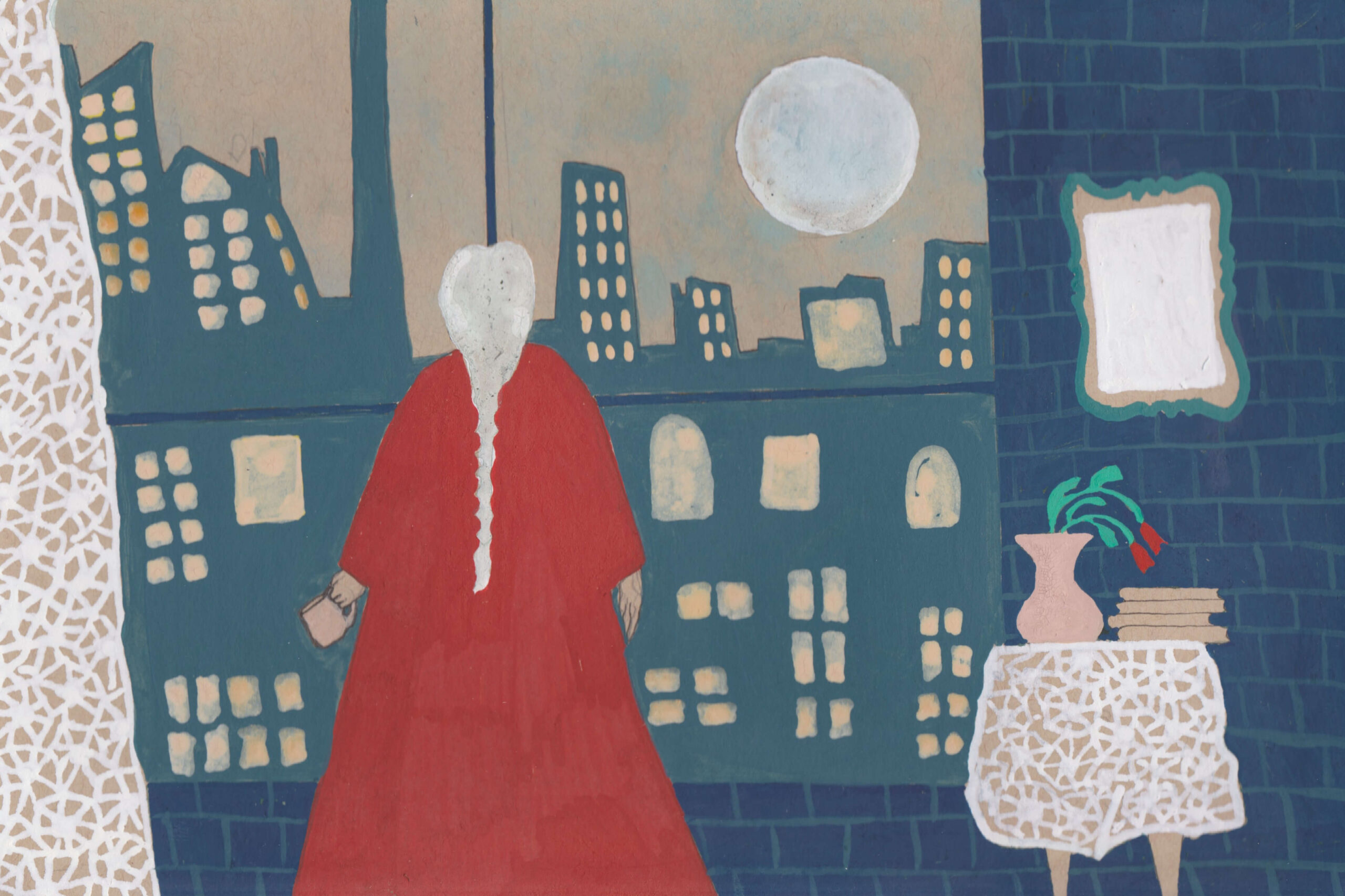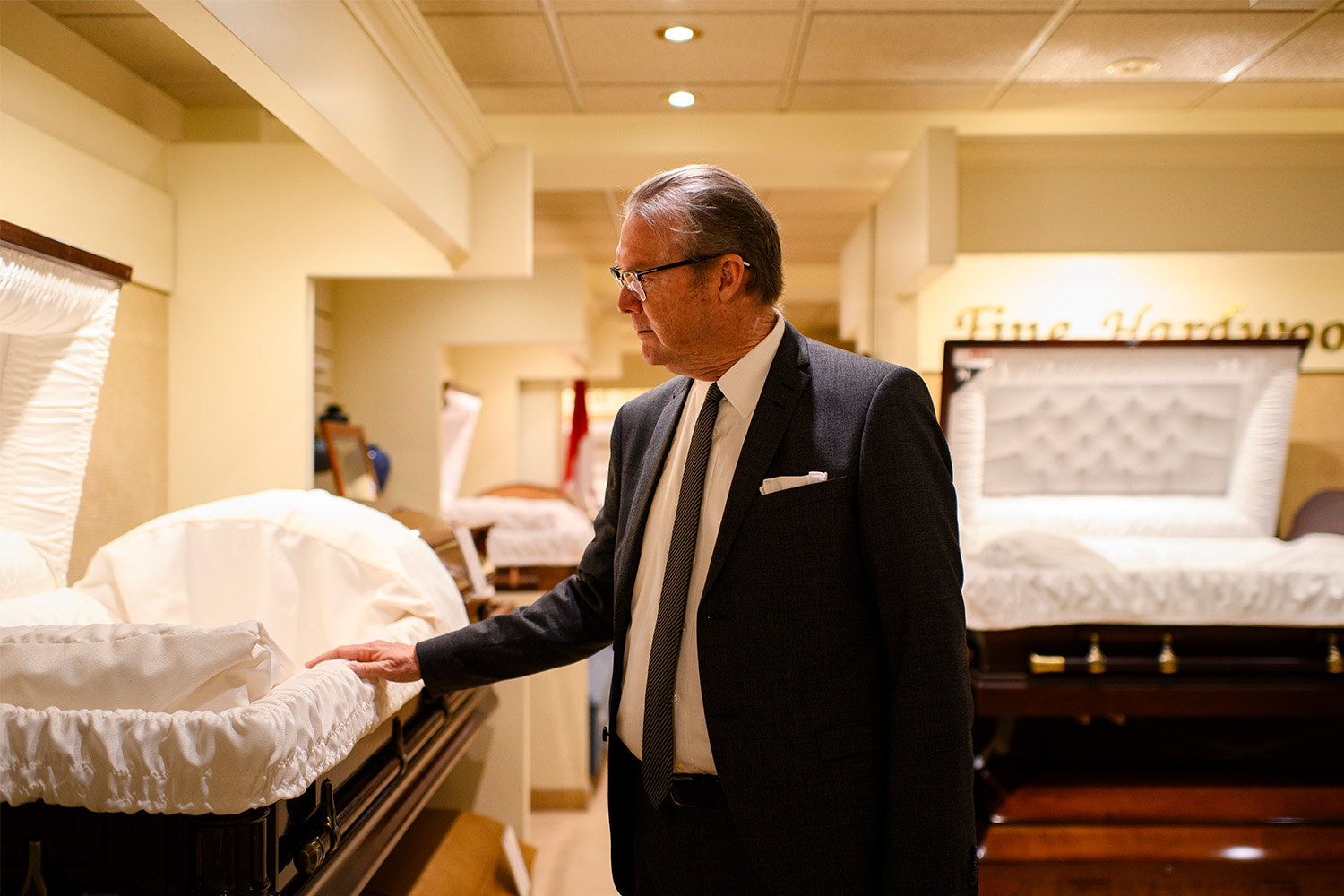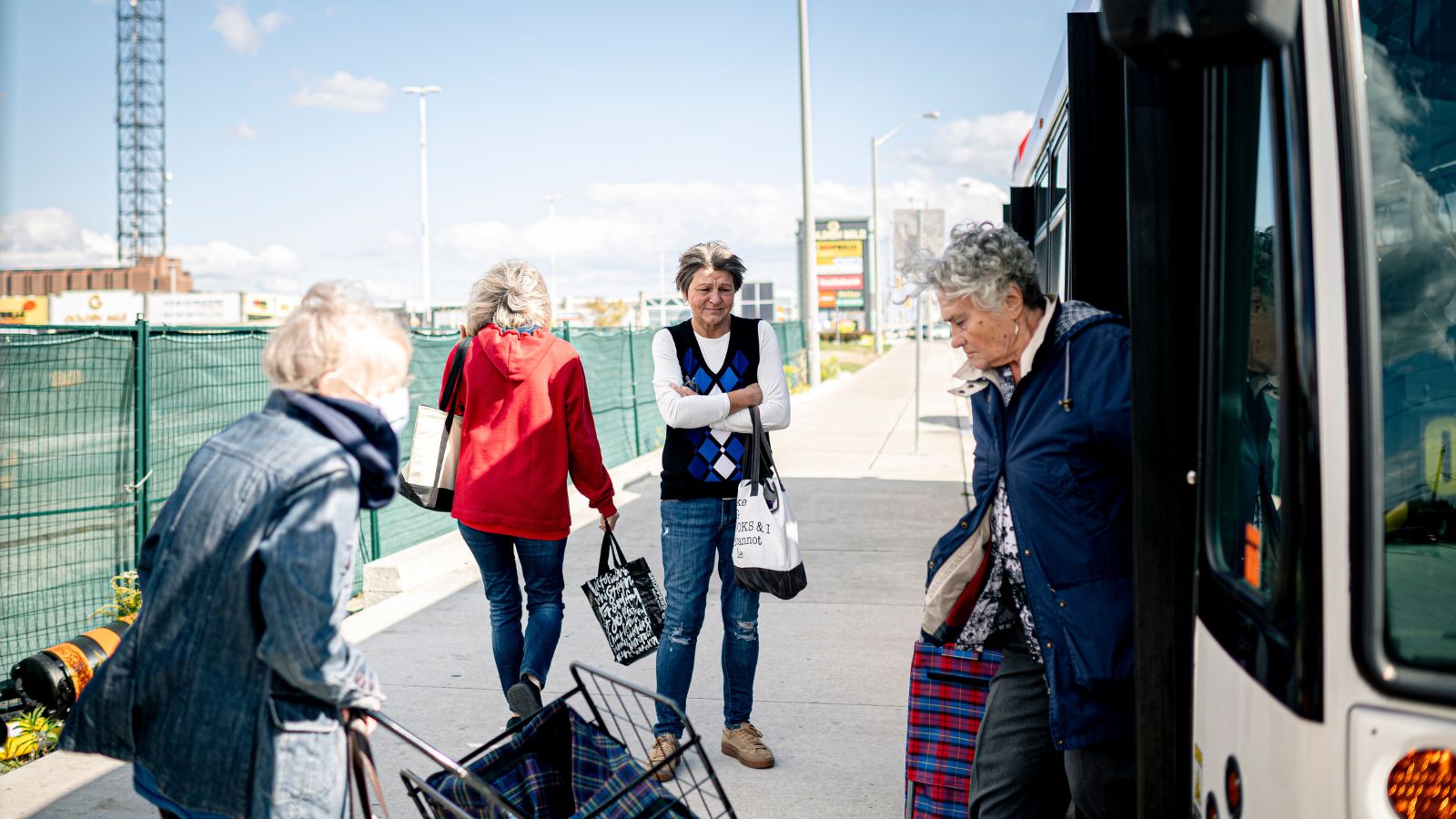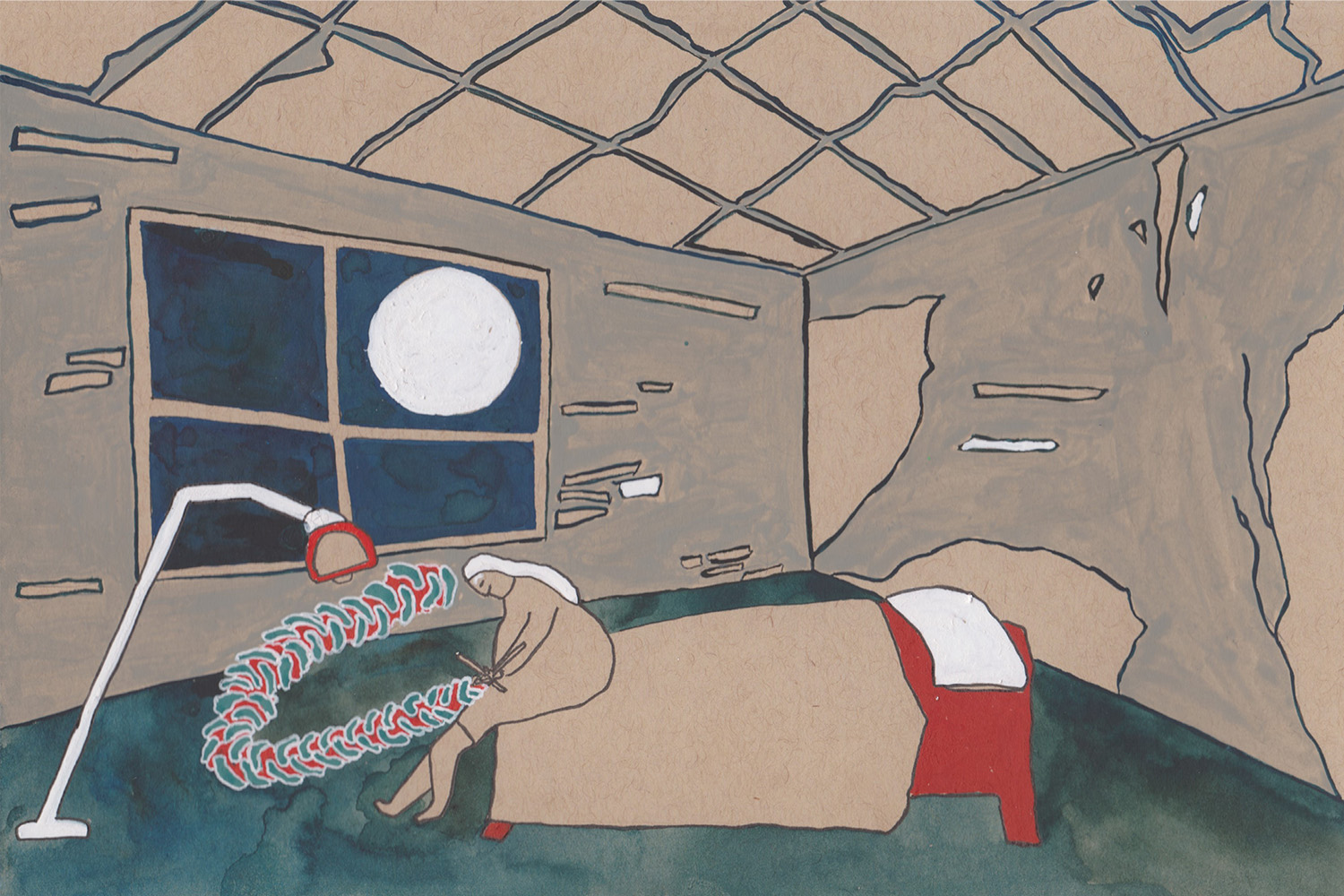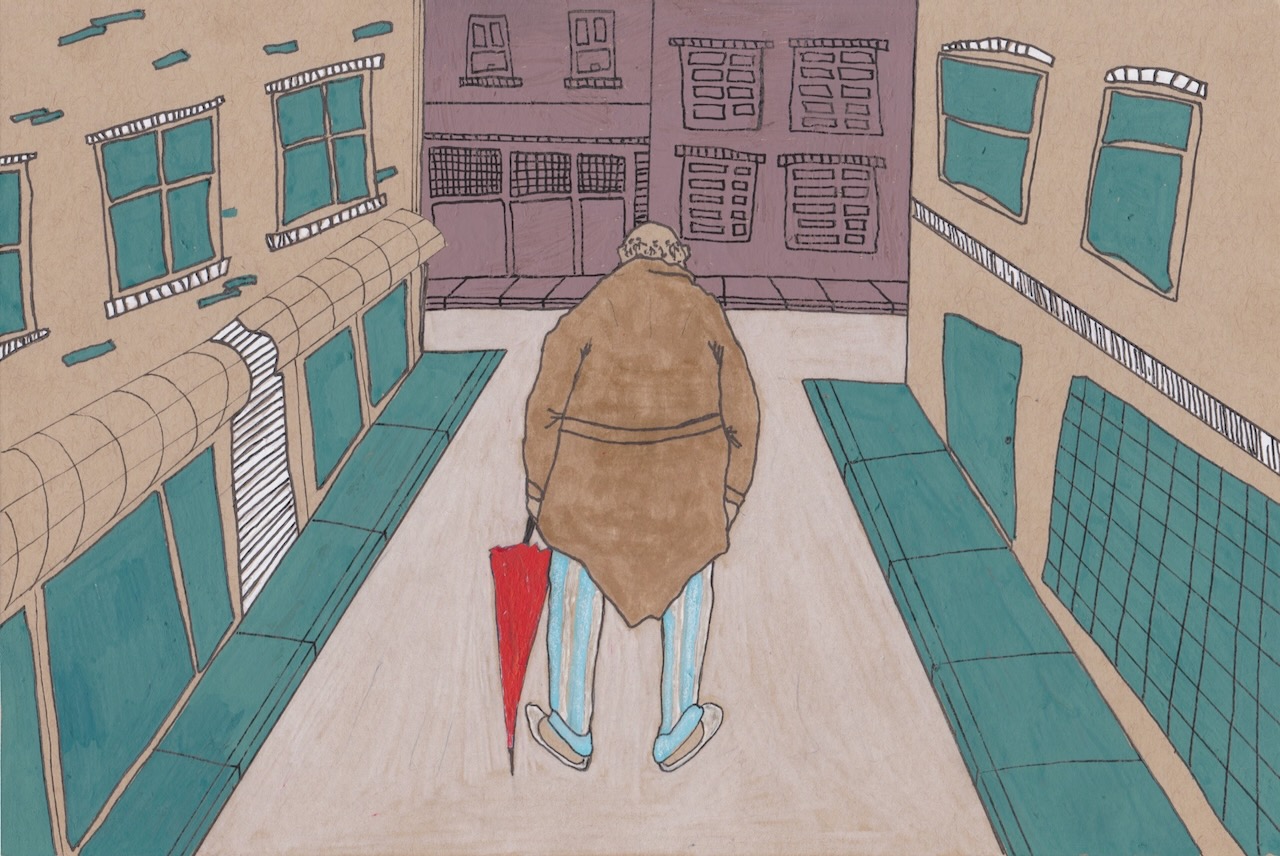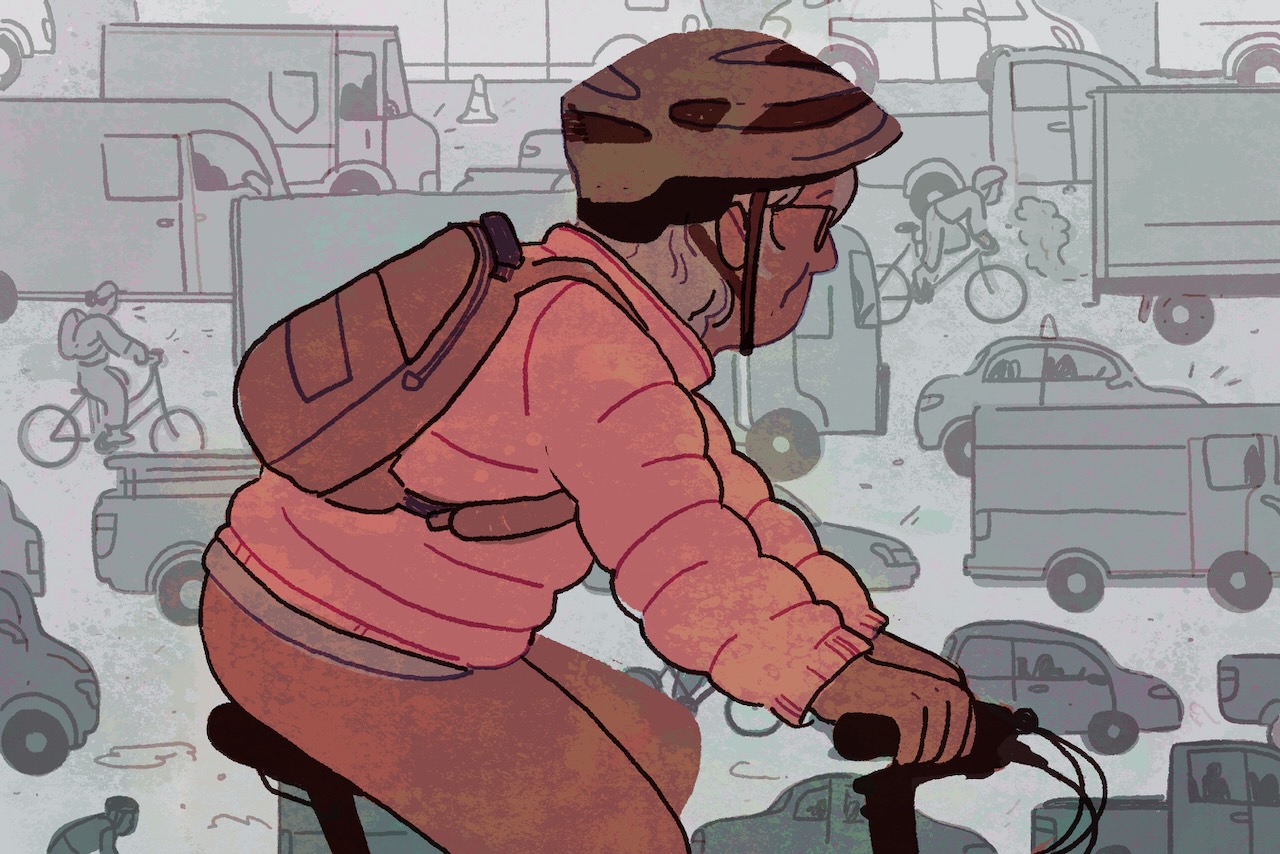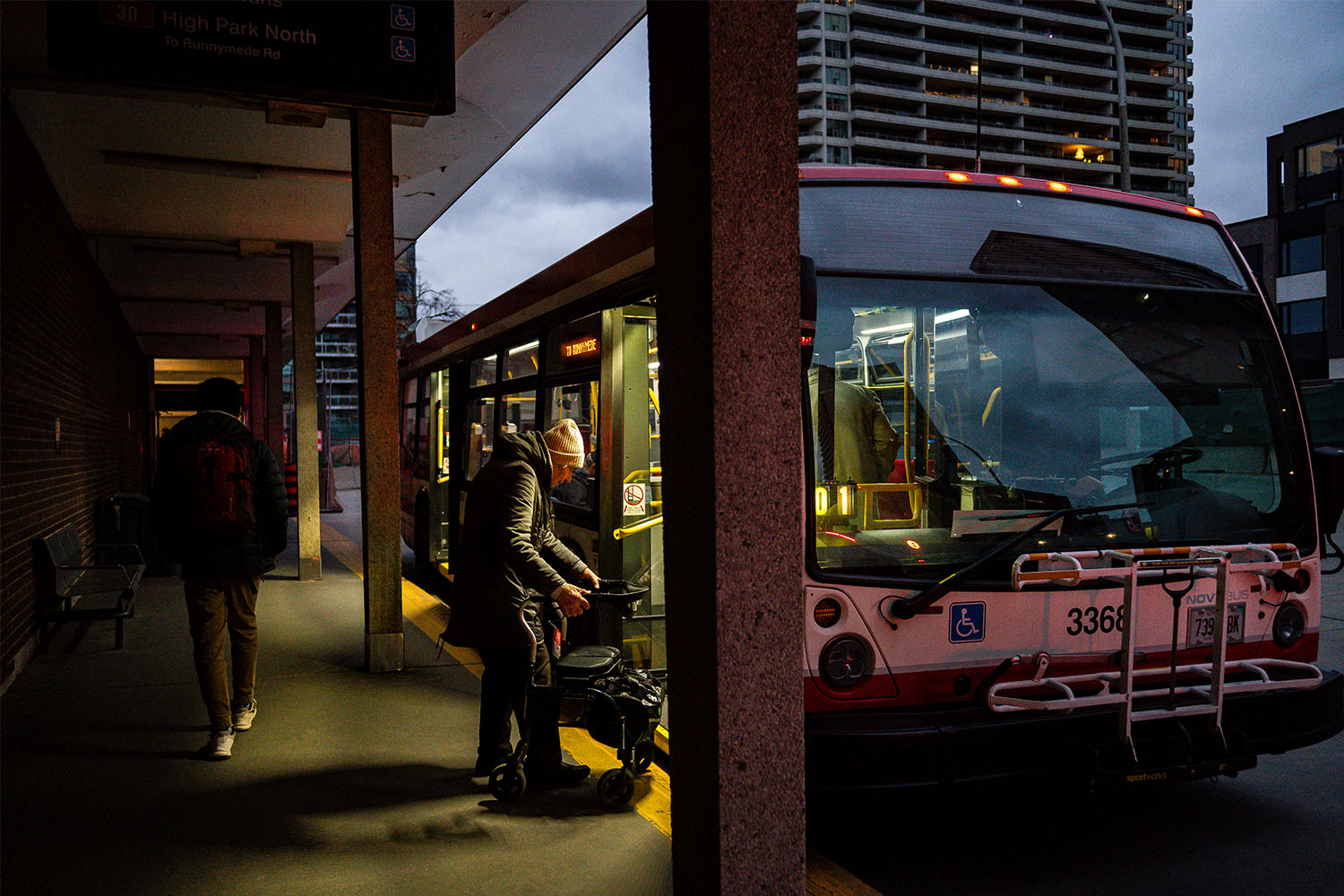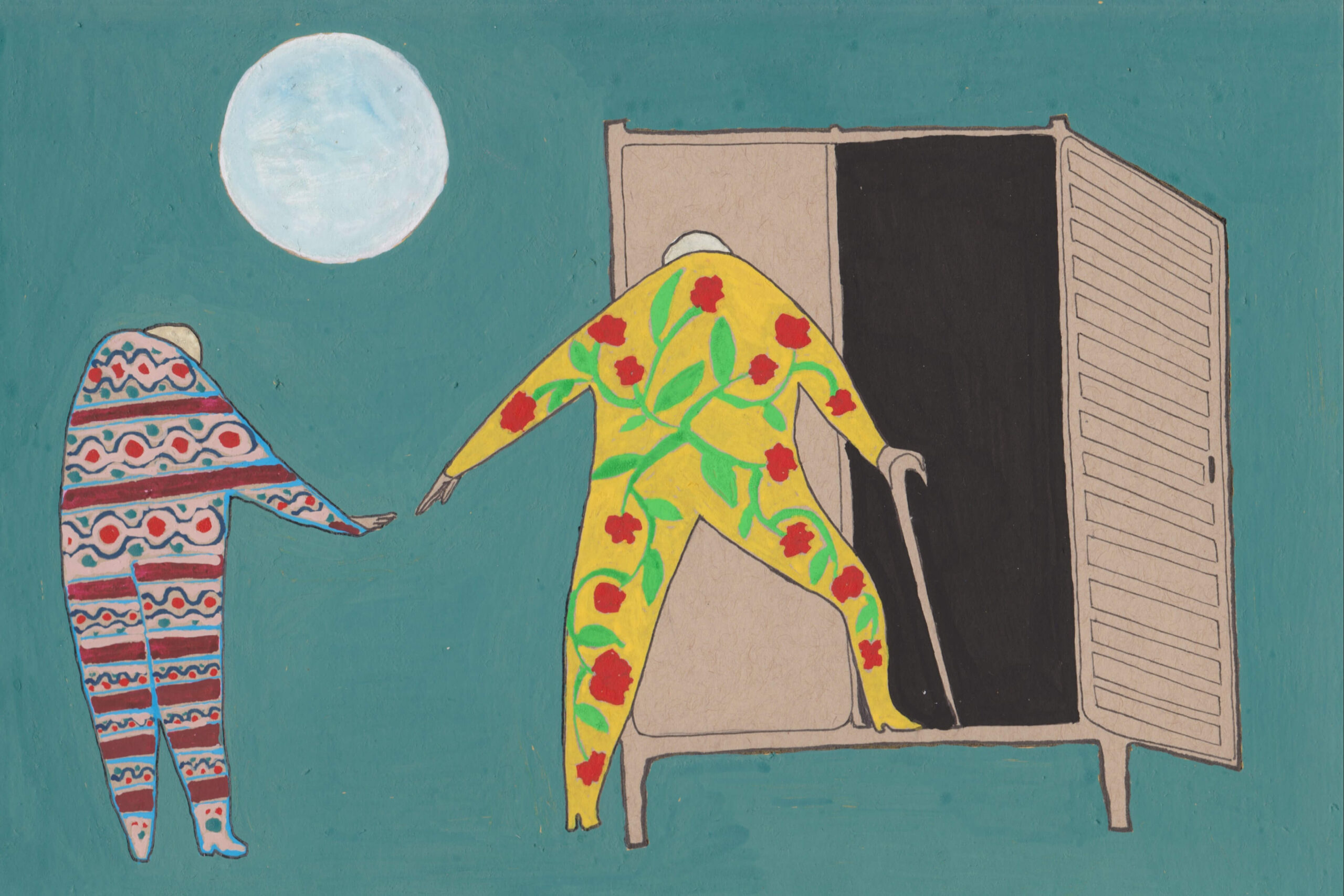
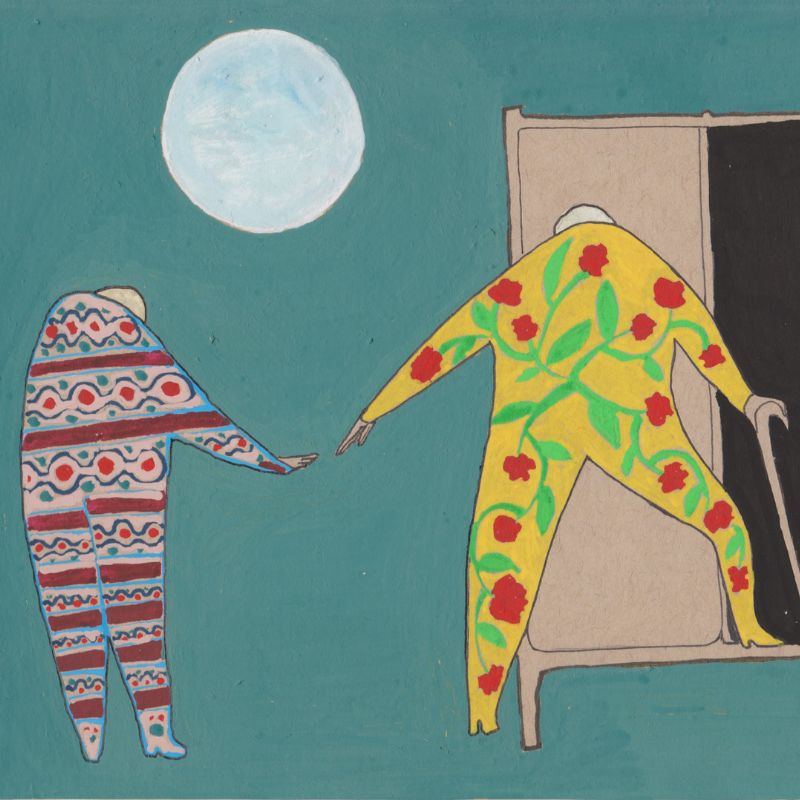
In 2008, Toronto social worker Barbara Michalik was working at a long-term care facility on Sherbourne Street when she met Gordon Sharp. At six-foot-four, Sharp had a demanding presence. But he was also a quiet defender of another resident, a woman he’d known outside of the facility’s walls whom he’d join for afternoon tea. The two had a special bond, Michalik recalls—so much so that staff would tease that the pair should eventually marry. They jokingly suggested a wedding at the home, a celebration for all of the residents with cake and flowers; they’d even hire a priest.
One day, Sharp approached Michalik. “He told me he didn’t want to marry her,” she remembers. Michalik agreed to drop the joke. But something else was bothering him. Sharp gripped Michalik’s shoulder. “He said, ‘Barb, I don’t want to marry her because I’m gay,” she says. “Don’t tell anyone.”
It was the first time Michalik was faced with the prospect that LGBTQ2S+ seniors might not feel safe in their own homes—and the first time she realized they might feel so afraid that they would return to the closet in their final years.
But that’s a reality more and more LGBTQ2S+ people face as they age. It might be born out of a fear of discrimination from caregivers, a distrust of workers in long-term care facilities or, in some cases, memory loss that returns them to a time before they were even out. A 2018 focus group of LGBTQ2S+ seniors published in the Canadian Journal on Aging found that fear of being forced to retreat to the closet was a pressing concern: “They expressed a fear that this freedom [to be open about one’s identity] would end if they needed to be institutionalized,” the study reads.
That fear is complicated by the kind of unique care that LGBTQ2S+ seniors often need as they get older. This care requires sensitivity from providers, who need to manage the fears many queer seniors hold that they’ll be judged or shamed for their identities. Over the years, research has shown that some LGBTQ2S+ seniors actively avoid long-term care and treatment out of that fear; one 2014 study out of Australia even found that some trans seniors would prefer to take their own lives than enter a long-term care facility.
Conservative estimates suggest there are as many as 65,000 LGBTQ2S+ people aged 65 and older in Canada. That number will only continue to grow alongside the country’s aging population. But long-term care facilities have yet to reckon with the way they can perpetuate harm and stigmatize LGBTQ2S+ people. Most affected by this are some of the queer and trans communities’ early fighters—survivors of the AIDS crisis, bathhouse raids where LGBTQ2S+ people were beaten and arrested, and Canada’s Gay Purge that saw sexual minorities fired and outed for their identities. Today’s LGBTQ2S+ seniors spent decades fighting for equality and justice, and still, the fight persists as they grow older and more vulnerable. Without more inclusive education among health care providers and a radical overhaul to the way long-term care homes operate, older queer and trans people will continue to suffer—and in many cases, they will retreat back into the closet out of fear.
Local Journalism Matters.
We're able to produce impactful, award-winning journalism thanks to the generous support of readers. By supporting The Local, you're contributing to a new kind of journalism—in-depth, non-profit, from corners of Toronto too often overlooked.
SupportleZlie lee kam has faced this discrimination firsthand. In 2007, at age 53, the Toronto community organizer, who identifies as gender mysterious, landed in a Toronto rehab hospital after a coma left her unable to walk or talk. When she did regain her voice, she told nurses she was a proud dyke. That’s when she found herself sitting in soiled diapers for hours at a time, waiting helplessly to be changed.
It’s why lee kam, now 70, has spent decades fighting on the frontlines for the people she calls “rainbow seniors.” Among her top priorities: improving long-term care. lee kam holds a seat on Toronto’s 2SLGBTQ+ Advisory Committee, and in 2017, she called on Toronto’s 10 publicly funded long-term care homes to make LGBTQ2S+ inclusivity training mandatory. There were promises, then delays. When the pandemic swept through long-term care homes across the province, priorities shifted to crisis control to try to keep residents COVID-free.
Then, in 2022, she heard a horrific story about a gay man in his 80s who lived in one of Toronto’s municipally funded long-term care homes. When some personal support workers and nurses in the home found out about his identity, they started to treat the man differently. He was often last to receive his weekly showers; sometimes, they’d leave him for hours to sit in his own urine and feces, citing their religious beliefs as an excuse not to care for him. For the sake of his safety, he retreated back into the closet.
The man was so guarded about his story that lee kam only heard it secondhand, when a friend relayed his experience during a workshop she hosted for queer seniors. Though she didn’t know the man, lee kam believed him. She had seen firsthand what being out in a health care institution could look like.
“We are hiding when we go into long-term care homes. We are hiding when we go into any care facility,” lee kam says. “But people don’t believe these things are happening.”
The first step in addressing a problem is to acknowledge it exists. This, lee kam says, has been one of the greatest hurdles she’s faced in raising awareness about the mistreatment of LGBTQ2S+ seniors in care. Among many advocacy groups in Toronto, she says, the emphasis has been on queer youth—the rights they’re granted in schools, the safeguards they need to come out to family, the resources to prepare them for a safe and healthy queer life ahead of them. “But we all get older,” she says. The lack of programming and services for rainbow seniors in their own communities, combined with a lack of education among straight and cisgender health care providers, is where the invisibility begins.
“When we look at each other, we don’t see sexual orientation or attraction. It’s invisible” says Martin Krajcik, a Toronto equity, diversity and inclusion trainer and consultant whose work centres on LGBTQ2S+ seniors. “So the problem is that people in our communities go into long-term care facilities, if they look around and no one is mentioning LGBTQ2S+ communities, they’ll stay silent.”
Uncloaking that invisibility starts in small gestures. “The first thing is competence on the side of the provider, understanding the unique needs that queer and trans seniors have,” says Adam Benn, director of diversity, equity and inclusion at VHA Home Healthcare, a home-care organization that operates in Toronto. That might be as simple as asking a long-term care home resident what their pronouns are, or recognizing that they may rely on chosen family members and not biological ones. Education, each expert interviewed for this story says, is key.
But when the kind of inclusive care necessary for LGBTQ2S+ seniors can’t be provided, some opt not to disclose their identities at all. It’s at this point, Benn says, that seniors in long-term care might say: “I’m fearful that I’m in a place where the providers don’t have the skills necessary to provide care for me. I’m putting myself back in the closet.”
“Today’s LGBTQ2S+ seniors spent decades fighting for equality and justice, and still, the fight persists as they grow older and more vulnerable.”
How that might look varies from case to case, Krajcik says—from refusing to talk about life before long-term care and stowing away personal belongings like photos, to referring to a partner visiting as a “friend” or opting not to have visitors at all. “But that’s a dangerous place to be, because you need to create an entirely new story about yourself,” Krajcik says.
That invisibility can exist two-fold for LGBTQ2S+ seniors living with dementia, a condition that could affect more than a million Canadians by 2030. Some people with dementia may forget they’re queer or trans as memories of a life out of the closet slowly disappear. Krajcik has seen this in long-term care facilities; a trans person, for instance, might ask to be referred to by their deadname, or a gay person may return to the closet because they can’t remember a life in which they disclosed their identity.
But for other LGBTQ2S+ people living with dementia, it’s more complicated. Maggie Perquin saw this with her wife of 16 years, Ruth Martin. It began in 2013, when Martin was 72 and couldn’t remember where things were in the London, Ontario, home they had shared for years. Four years later, Martin began falling uncontrollably—a telltale sign of vascular dementia, which affects not just memory but the vessels in the brain and reduces muscular function.
In 2018, Martin received her official diagnosis. But when Perquin began seeking support groups for couples living with dementia, she noticed they were often the only same-sex couple in the room. “I wondered, ‘Why are Ruth and I the only couple if there are 2,800 other couples [being supported] here?’”
Perquin says there’s a certain shame that comes alongside a dementia diagnosis, one that for many LGBTQ2S+ people can mirror the unique stigma that queer and trans seniors experienced in their youth when coming out. That trauma, she says, can make LGBTQ2S+ seniors wary of disclosing a new identity—with dementia. “They’ve already been vilified once in their lives,” Perquin says. “They’re not about to do that again.”
To find community among other LGBTQ2S+ families dealing with dementia diagnoses, Perquin and Martin launched a queer support group in January 2020. The group eventually disbanded when the pandemic hit, but Perquin has been writing grants in hopes of securing funding to restart another caregiving group for LGBTQ2S+ people affected by dementia. And though Martin died this April, Perquin remains passionate about demystifying dementia: “I just want [queer] people to know they’re not alone.”
Join the thousands of Torontonians who've signed up for our free newsletter and get award-winning local journalism delivered to your inbox.
"*" indicates required fields
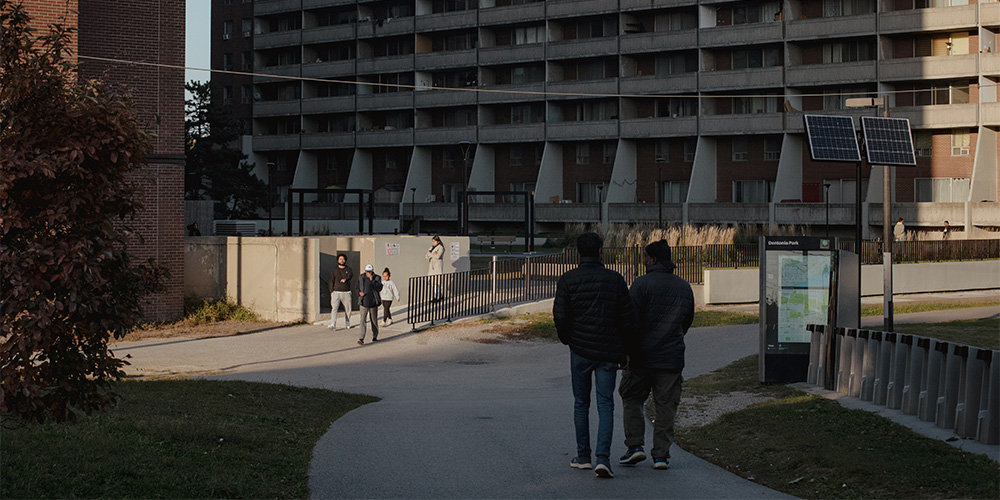
Two years ago, lee kam wound up at the very place she had been educating LGBTQ2S+ organizers about for decades: a long-term care home. She had fallen down the stairs and broken her ankle, and she needed two months of care before she could transition into a program at a rehab hospital. While most personal support workers at the long-term care home were kind to her, one pointed out the rainbow paraphernalia lee kam had in her room and suggested she couldn’t take care of her, citing religious beliefs.
Facing that discrimination reinvigorated lee kam’s desire to fight. And it’s in that fight that changes have been made. In 2022, lee kam penned a letter to Toronto’s 2SLGBTQ+ Advisory Committee about the man in his 80s who was deathly afraid to come out at his long-term care home. Though a toolkit to train all staff on LGBTQ2S+ inclusive practices in the city’s 10 publicly funded long-term care homes had been developed in 2017, lee kam had learned there was no enforcement or accountability to ensure its best practices had been implemented, nor was training made mandatory. “Please remember that one day, if you are lucky, you too will be a 2SLGBTQI+ senior, and I would like for us to all enjoy safe and comfortable lives,” lee kam wrote in her letter.
The committee agreed: Training needed to be mandatory. A motion on the matter passed. It’s a major win, but lee kam acknowledges that the work is far from done. Privately owned and operated long-term care homes, which make up the majority of long-term care facilities in Canada, are not required to educate their staff about LGBTQ2S+ seniors and the care they need to thrive. Continued education will be needed to create the kinds of dignified, accepting spaces LGBTQ2S+ seniors should live in during their final years. “We are all going to get to the end of the rainbow at some point in our lives,” lee kam says.
When the six-foot-four man at her home disclosed his identity, Michalik had a similar reckoning. In 2009, Michalik spearheaded training for personal support workers and staff at the Sherbourne Street home where she worked on LGBTQ2S+ inclusivity—“everything from the acronym to the life stories of those who survived the AIDS crisis,” she says. Michalik then worked to create partnerships with the Senior Pride Network, Casey House, and other LGBTQ2S+ organizations in the city. Today, she’s the executive director of academic, community partnerships and programming for the Rekai Centres, a non-profit organization that runs two long-term care facilities in downtown Toronto, with a focus on LGBTQ2S+ seniors and their safety in long-term care.
But educating workers to make residents feel safer, Michalik found, was not enough. In 2018, Rekai commissioned global market research giant Ipsos Canada to find out what rainbow seniors wanted from long-term care homes. Overwhelmingly, LGBTQ2S+ respondents called for a dedicated unit, a place where no one would feel ashamed to be out and proud, a safe haven of sorts. That space meant going beyond allyship and competent care. It meant creating a community.
Michalik and her team at Rekai got to work. In 2022, they unveiled North America’s first Rainbow Wing, a dedicated 25-bed unit for rainbow seniors at the organization’s Wellesley Central Place home. There, technicolour rainbow doors welcome visitors and pride flags adorn the halls. Activities include drag nights and Pride parties.
lee kam, who has worked alongside Michalik at Rekai since 2015, says the Rainbow Wing is a great initiative. But with only 25 beds, just a small percentage of LGBTQ2S+ seniors will benefit from its programming and care. That’s why, lee kam says, training and education at every long-term care home is so crucial. “Every space we enter should be rainbow positive,” she says.
Michalik is on the front lines of that education, talking with long-term care providers across the province about the work she’s done at Rekai, and how other homes might emulate some of their inclusive practices. Still, in training seminars Michalik says she’s often told homes don’t have any LGBTQ2S+ residents. “They’re just not telling you,” she says. “You’re not giving them the opportunity to disclose or identify.”
In 2025, a second Rainbow Wing is slated to open at Cherry Place, also in downtown Toronto. But Michalik says any long-term care facility can start becoming an LGBTQ2S+-affirming space with far less. “Those identifying tools—that little nook or cranny, the little resource board with LGBTQ2S+ information—that’s all you need to do to get started,” she says. “You don’t need 25 beds.”
That’s because the real magic of the Rainbow Wing is not in its bright decor or queer-themed activities. It’s in the mundanity of being able to grow old in a place that accepts you as yourself: the ability for residents to have long-term partners and chosen family show up without question, to talk openly about their pasts, to share parts of who they are without fear.

